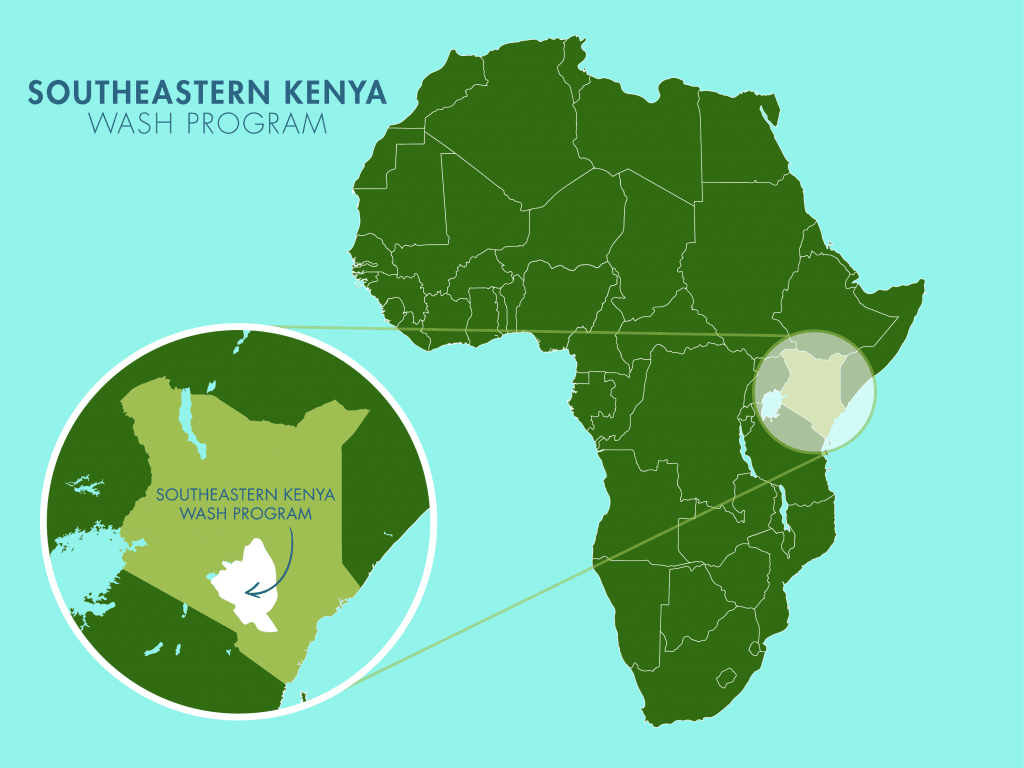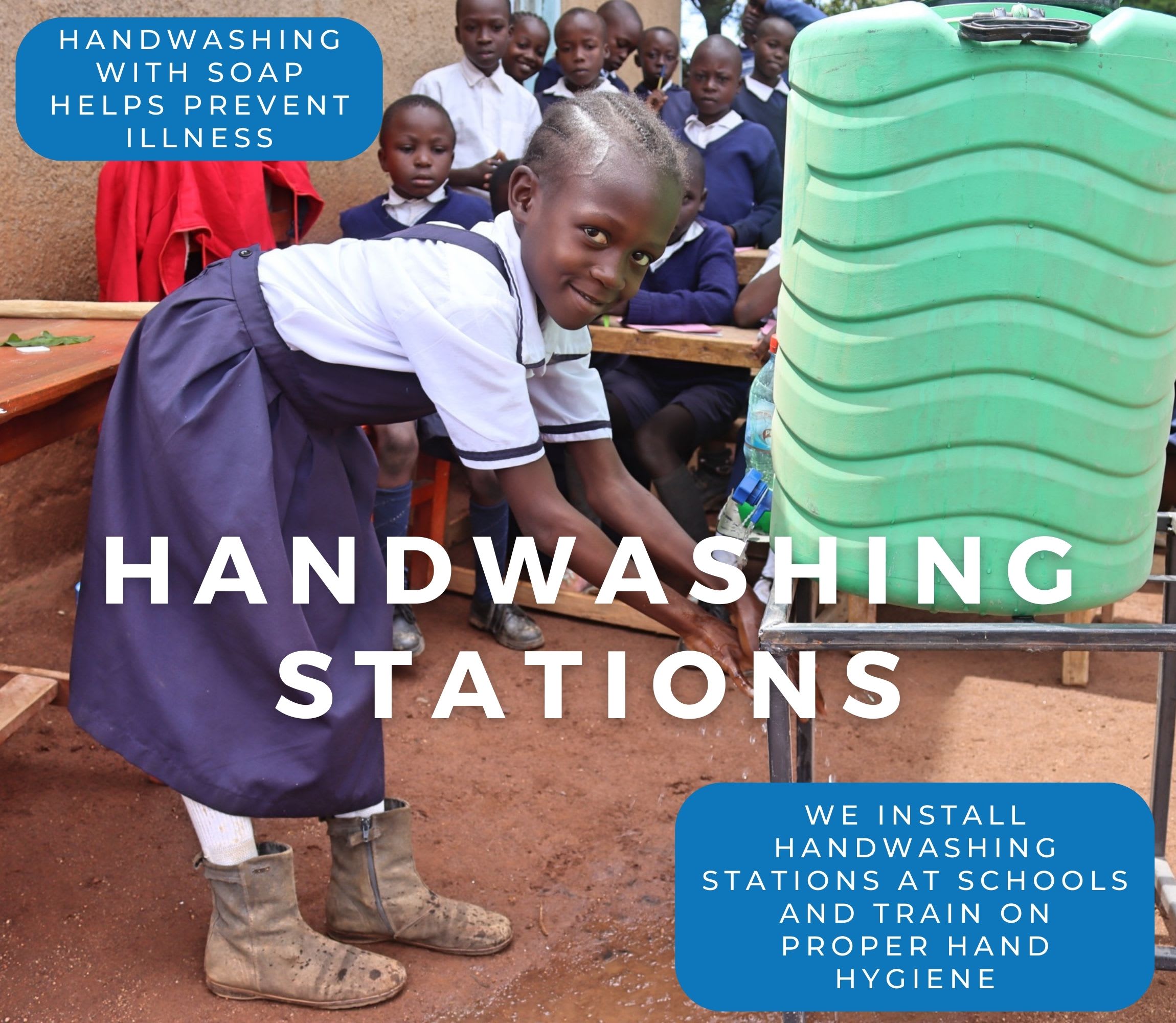December, 2019: Katalwa Secondary School Project Complete!
Katalwa Secondary School in Kenya now has access to a new source of safe, clean water thanks to the completion of their rain tank, which has the ability to collect 104,000 liters of water. We installed new handwashing stations for students and we trained students and staff on improved sanitation and hygiene practices. All of these components work together to unlock the opportunity for these students to live better, healthier lives.

"This is a new beginning for Katalwa Secondary School!" said Deputy Principal Florence Mewndwa.
"Water challenges will be a thing of the past. God has been good to us and we are happy to have been supported with this water project. We can now comfortably think about starting a boarding wing because our biggest challenge has always been water. We are very happy and thankful to the donors."
Rain Tank
Katalwa Secondary School is affiliated with the Katalwa Twooka Oyu Self-Help Group, since most of its members’ children attend here. These parents and the school administration approached the self-help group committee and requested their assistance in alleviating the water shortage at the school.

The Process
A meeting with all of the parents and the Head Teacher was then held to plan out the project. Parents agreed to collect construction materials like sand, rocks, and water. We would complement their materials by delivering the expertise, tools, lumber, metal, cement, and gutter system.
This tank is a whopping 104,000 liters not because of a large student population, but because of how rarely it rains in Southeastern Kenya. The more water we can store during the seasonal rains, the more water available through the dry months.

Construction for this large rain tank is much like the construction of a concrete house. First, the ground is leveled for foundation excavation. Alternating layers of impermeable rocks are laid upon mortar up to 7 feet high, with internal and external diameters of 25 and 28 feet respectively.

A reinforced concrete column is built right up to the center of the tank, which holds up the roof and prevents it from caving in. The walls are then plastered both internally and externally with waterproof cement. After that, several feet of guttering is installed and channeled into the tank. The roofing is made of iron sheets and timber. There are vents to allow rainwater into the tank from the gutters.

School leadership is armed with the technical skills to ensure that the water tank remains functional, and gaps that exist can be identified through our ongoing monitoring visits.
The school water project will be maintained and managed by the school leadership, and they remain at liberty to put in place rationing plans aimed at good utilization of available water resources in the best interests of the students.

Handwashing Stations
The new handwashing stations were delivered in time for training so that they could be used for handwashing demonstrations. Each of these has 3 taps so that 6 students can wash their hands at the same time.

New Knowledge
Our regional field officer worked with the school principal to schedule a sanitation and hygiene training for the students and staff. All students and staff members graced the event which made it an important affair within the school.
The training happened in the evening after classes and was conducted at the school dining hall. This was the most conducive place as it was able to accommodate all the attending students. The prevailing weather at the time of training made it favorable and all the activities went on as planned.

All of the students participated equally during the training by asking questions and contributing their opinions and views. They also posed numerous hygiene and sanitation dilemmas which they had been facing to discuss them at length and find solutions.
We went over topics including student health club activities; disease transmission; preventing the spread of disease; personal hygiene; handwashing; water hygiene; food hygiene; latrine hygiene; and soapmaking.

In the handwashing section, students together with their teachers were taught the proper procedure of handwashing. We emphasized the importance of washing hands under running water with soap, and when there is no soap available, to use ash. This was made special by the fact that almost all of the students and staff present found that they never knew the right handwashing procedure regardless of how everyone assumed it was simple.
The students were also interested in an activity where they learned how fecal contaminants can pass from one place to another. They learned how fecal-oral transmission is a key contributor to the illnesses that they experience.

"The whole process of the session has allowed us to become more familiar with methods to treat water such as sun drying and using moringa seeds. It has helped us to reflect on our daily lives by focusing on common health and hygiene problems, hence connecting knowledge about the spread of disease and better hygienic behaviors,” said student Mutethya.

This training was crucial, especially to the school-going children, as it will help them improve their hygienic behaviors thus reducing diarrhea cases. The participants showed commitment to improving their hygiene and sanitation habits and the content they learned will help them to improve their hygienic behaviors. We will make close and regular follow-ups to ensure the pupils improve their hygiene and sanitation.
Thank you for making all of this possible!


 Rainwater Catchment
Rainwater Catchment
 Rehabilitation Project
Rehabilitation Project































